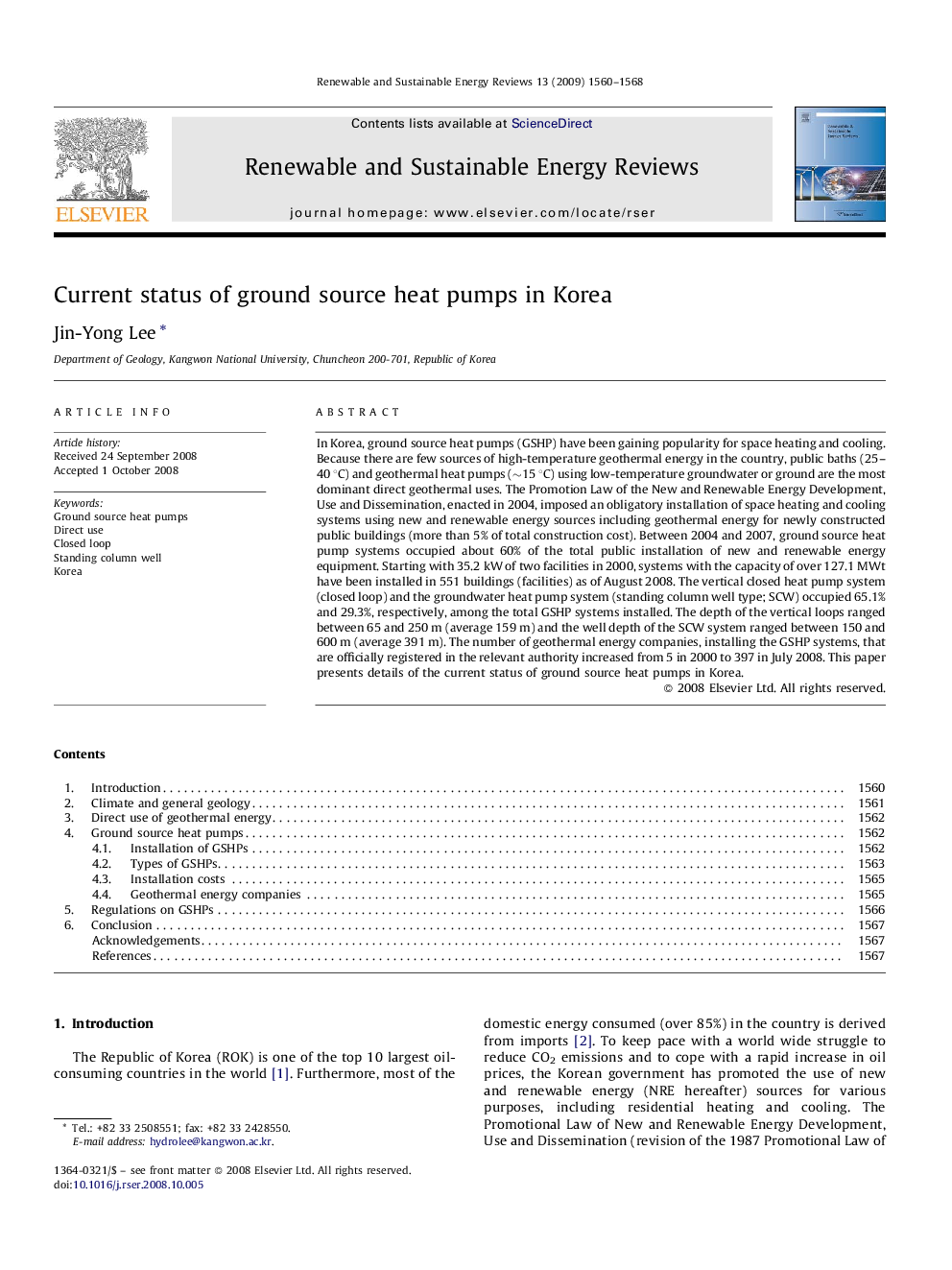| Article ID | Journal | Published Year | Pages | File Type |
|---|---|---|---|---|
| 1752137 | Renewable and Sustainable Energy Reviews | 2009 | 9 Pages |
In Korea, ground source heat pumps (GSHP) have been gaining popularity for space heating and cooling. Because there are few sources of high-temperature geothermal energy in the country, public baths (25–40 °C) and geothermal heat pumps (∼15 °C) using low-temperature groundwater or ground are the most dominant direct geothermal uses. The Promotion Law of the New and Renewable Energy Development, Use and Dissemination, enacted in 2004, imposed an obligatory installation of space heating and cooling systems using new and renewable energy sources including geothermal energy for newly constructed public buildings (more than 5% of total construction cost). Between 2004 and 2007, ground source heat pump systems occupied about 60% of the total public installation of new and renewable energy equipment. Starting with 35.2 kW of two facilities in 2000, systems with the capacity of over 127.1 MWt have been installed in 551 buildings (facilities) as of August 2008. The vertical closed heat pump system (closed loop) and the groundwater heat pump system (standing column well type; SCW) occupied 65.1% and 29.3%, respectively, among the total GSHP systems installed. The depth of the vertical loops ranged between 65 and 250 m (average 159 m) and the well depth of the SCW system ranged between 150 and 600 m (average 391 m). The number of geothermal energy companies, installing the GSHP systems, that are officially registered in the relevant authority increased from 5 in 2000 to 397 in July 2008. This paper presents details of the current status of ground source heat pumps in Korea.
